Key takeaways
- Paranormal infotainment engages viewers by blending storytelling with the exploration of fears, prompting personal reflections on belief and skepticism.
- The Amityville Horror House’s history raises questions about the interplay between trauma, personal experience, and cultural myth-making.
- The media significantly influences how paranormal stories are perceived, often amplifying fear and shaping narratives beyond the original events.
- Lessons from the Amityville case highlight the importance of skepticism alongside openness to understand the emotional impact of such stories on individuals and society.
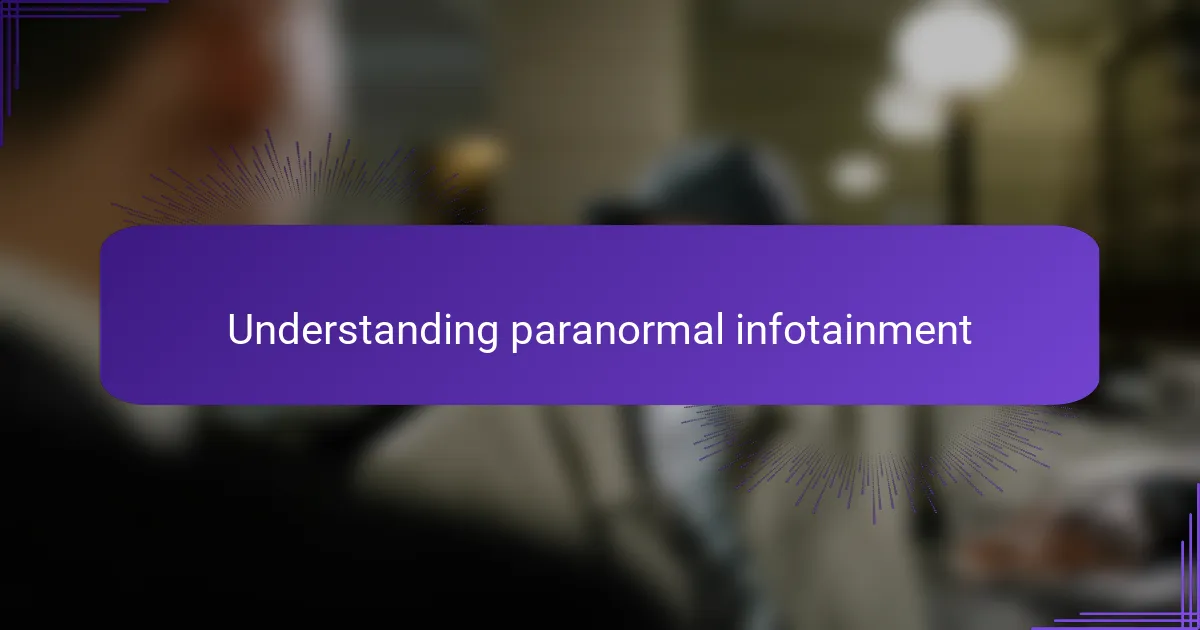
Understanding Paranormal Infotainment
Paranormal infotainment blends storytelling with a curiosity for the unknown, creating a unique experience that’s both thrilling and thought-provoking. I often find myself wondering why these stories captivate us so deeply—maybe it’s our innate desire to confront fears in a safe space. For me, this blend of entertainment and mystery keeps my mind active and emotions on edge without losing grip on reality.
I’ve noticed that paranormal infotainment serves as a mirror reflecting our own beliefs and doubts about what lies beyond the visible world. Sometimes, it feels like sharing these stories is a way of connecting emotionally with others who share the same curiosity or apprehension. Have you ever felt that chill when a story hits too close to home? That’s the power of this genre—it taps into feelings we don’t always express aloud.
What makes paranormal infotainment truly fascinating is its delicate balance between fact and fiction. It asks us, “What if?” and leaves us to decide where truth ends and imagination begins. Engaging with these stories pushes me to explore my own boundaries of skepticism and belief, turning each tale into a personal exploration rather than just passive consumption.
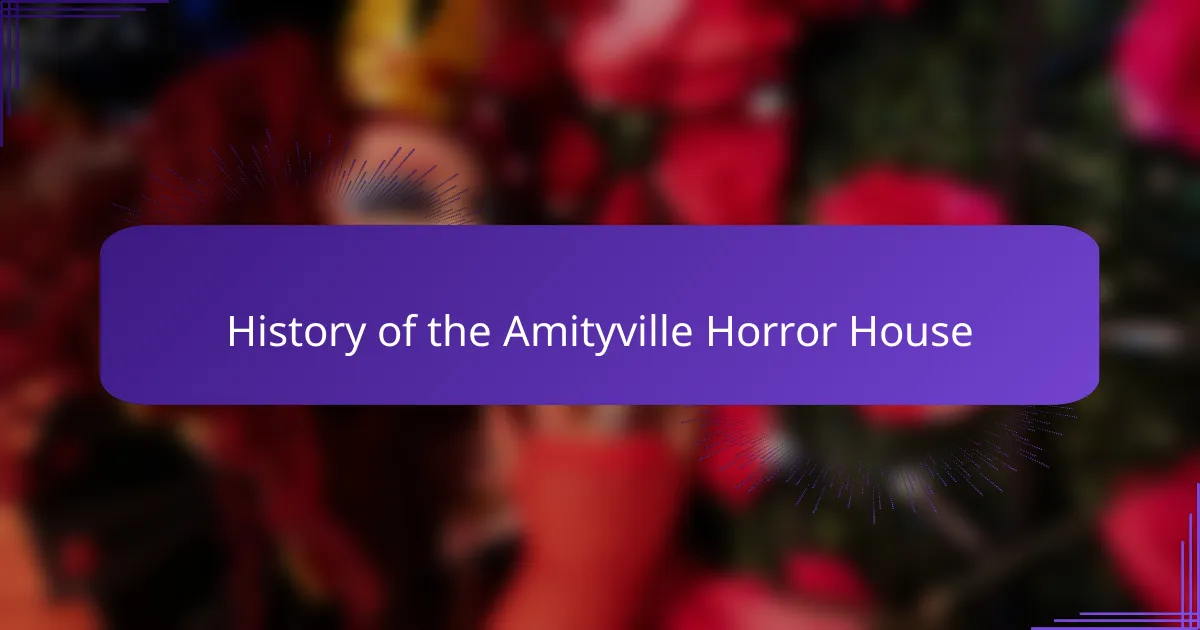
History of the Amityville Horror House
The Amityville Horror House has a history that’s as chilling as the stories it inspired. Back in 1974, the Lutz family moved into this seemingly ordinary Dutch Colonial home, only to flee 28 days later, claiming they were tormented by supernatural forces. I’ve always wondered how much of that history is real and how much might be a mix of fear and imagination.
Before the Lutzes, the house was the scene of a tragic mass murder—Ronald DeFeo Jr. shot six family members while they slept. Knowing this dark past makes me question whether the house ‘absorbed’ those terrible energies or if our minds just latch onto such stories to explain the unexplainable. Could evil truly linger in a place, or is it all in our heads?
What strikes me is how the house’s history became a cultural phenomenon, spawning books, movies, and debates that blur the line between fact and folklore. I often find myself caught between incredulity and fascination—can a single house hold so much darkness, or have we created a legendary haunted symbol to make sense of tragedy? This question keeps me coming back to the story, eager to uncover the truth beneath the tales.
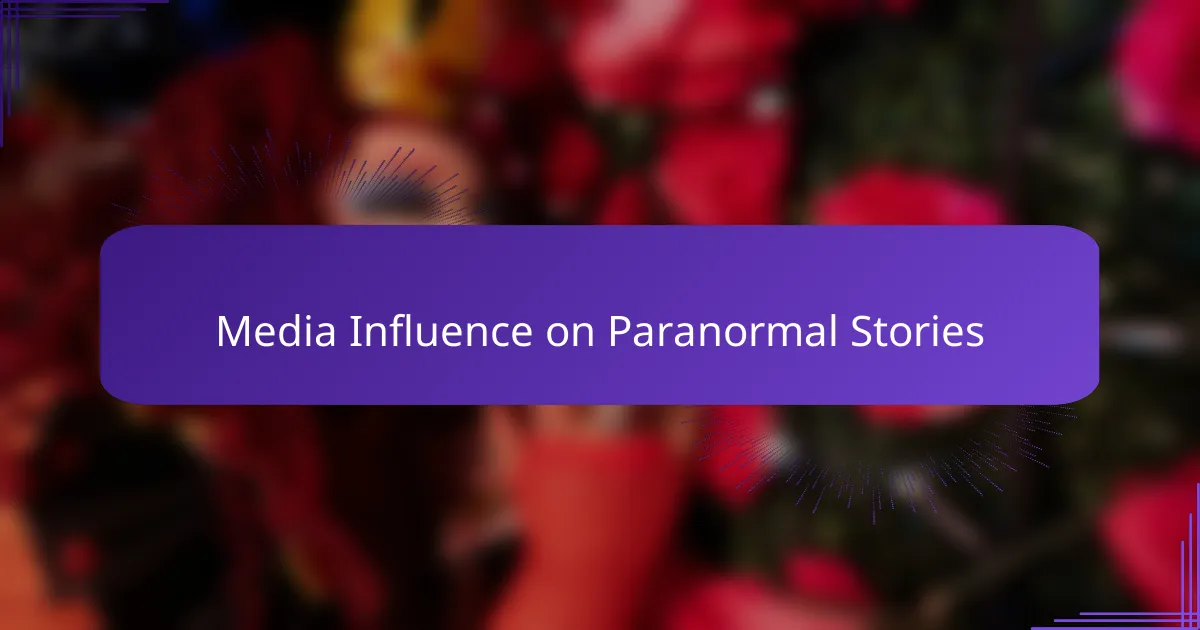
Media Influence on Paranormal Stories
The media wields incredible power in shaping how we perceive paranormal stories. I’ve noticed that sensational headlines and dramatic reenactments often amplify fear, making the unknown feel closer and more real than it might actually be. Have you ever caught yourself double-checking your locks after watching a horror documentary? That’s exactly the kind of emotional ripple the media creates.
In my experience, media not only retells these stories but actively molds them—sometimes stretching them beyond the original events. Take the Amityville Horror, for example; the books and films painted a much darker, more intense picture than the initial accounts suggested. It makes me wonder how much our collective imagination is fueled by these portrayals rather than raw facts.
Sometimes, I feel like the media’s portrayal turns paranormal stories into modern myths that serve cultural needs rather than truth. They give us shared narratives to explore fear, loss, and the unknown, but at the same time, they blur the line between witness and spectacle. Is our fascination with these tales a search for meaning, or are we simply drawn to stories that thrill us, no matter their accuracy?
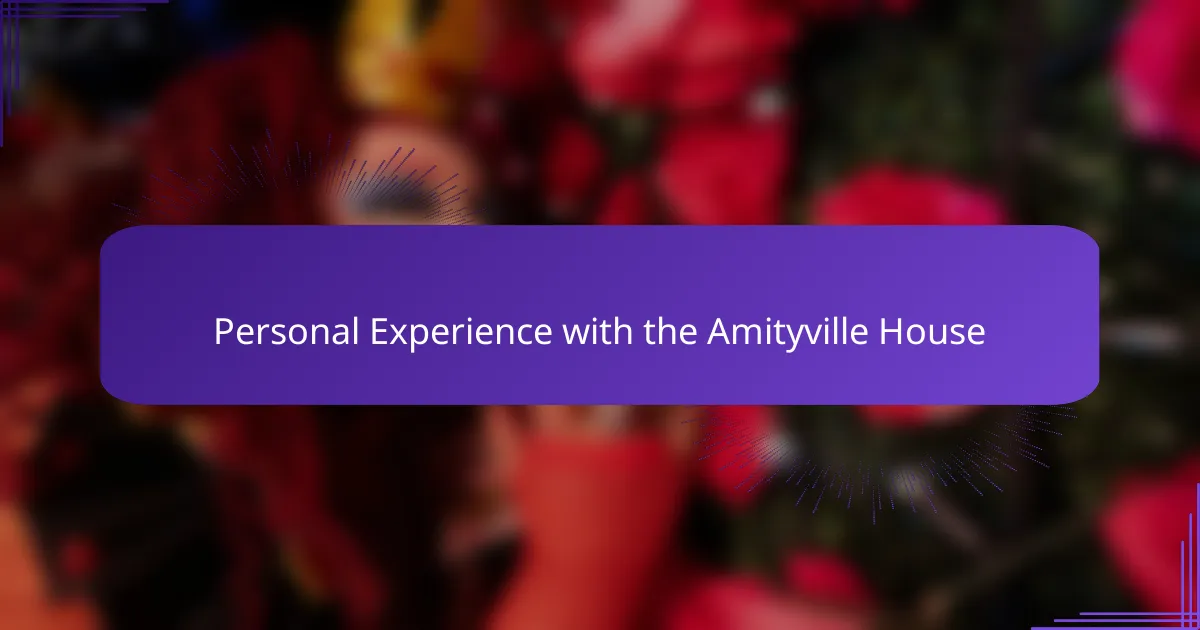
Personal Experience with the Amityville House
Visiting the Amityville Horror House area left a strange impression on me—there was an eerie stillness that felt both unsettling and oddly magnetic. I remember standing across the street, imagining what it must have been like for the Lutz family to endure their reported nightmare, and it made the story hit closer to home than any documentary ever could. Have you ever experienced a place where silence speaks louder than words? That’s what happened to me there.
I also found myself wrestling with skepticism and curiosity as I explored the house’s surroundings. Could the negative energy people talk about truly linger, or is it just the power of suggestion amplified by the house’s notorious past? My gut told me it was a mix of both—our minds craving explanations for the unknown, while the dark history was impossible to ignore. That tension kept me hooked, trying to decipher fact from fear.
One night, after reading about the Amityville events, I couldn’t shake an uneasy feeling that lingered long after the lights went out. It made me reflect on my own response to fear and how stories like these tap into something deeply human—our need to confront darkness, even if from a safe distance. I wonder, what is it about haunted houses that pulls us back time and again, despite the chill they leave behind?

Analyzing the Credibility of Claims
When I first looked into the claims surrounding the Amityville Horror House, I couldn’t help but notice how much of the story relies on personal testimony and anecdotal evidence. It made me ask: How do we measure the truth in experiences that are so deeply subjective? For me, the lack of concrete proof means I have to approach these accounts with an open mind but healthy skepticism.
Reflecting on the original Lutz family’s statements, I find myself wondering whether their fear was a genuine paranormal encounter or a psychological response to trauma and stress. I’ve seen how fear can distort perception, turning small noises or shadows into something far more sinister. Isn’t it possible that our minds fill in the gaps when confronted with the unknown?
Ultimately, what strikes me is the way these claims have morphed over time, shaped by retellings and popular culture. I question how much of the story is rooted in reality and how much is a narrative crafted for dramatic effect. Does the enduring fascination lie in uncovering truth, or have we collectively embraced a legend because it speaks to our deepest fears?
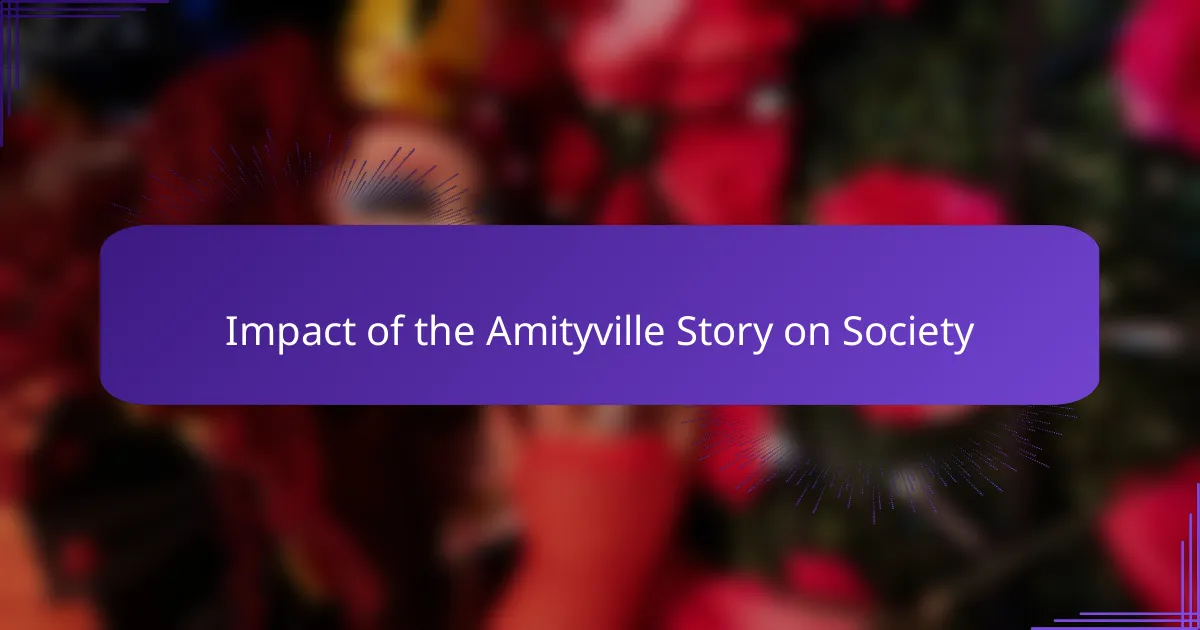
Impact of the Amityville Story on Society
The Amityville story has seeped into our collective consciousness in a way few paranormal tales have. I’ve noticed it sparks debates not just about ghosts, but about how we process tragedy and trauma. Isn’t it fascinating how one house can become a symbol for fear, curiosity, and the unknown all at once?
From a societal perspective, the tale has fueled an entire subculture obsessed with haunted locations and supernatural investigations. I often wonder whether this fascination serves as a form of escapism or a deeper psychological need to confront what frightens us in a controlled way. Have you seen how Amityville-themed tours, merchandise, and media keep the story alive, blurring the lines between myth and reality?
What intrigues me most is how the story amplifies our relationship with fear itself. It’s not just about ghosts or evil energies, but about how society channels those emotions into stories that connect us. Could it be that the Amityville legend endures because it helps us face darkness together, even if that darkness is partly imagined?
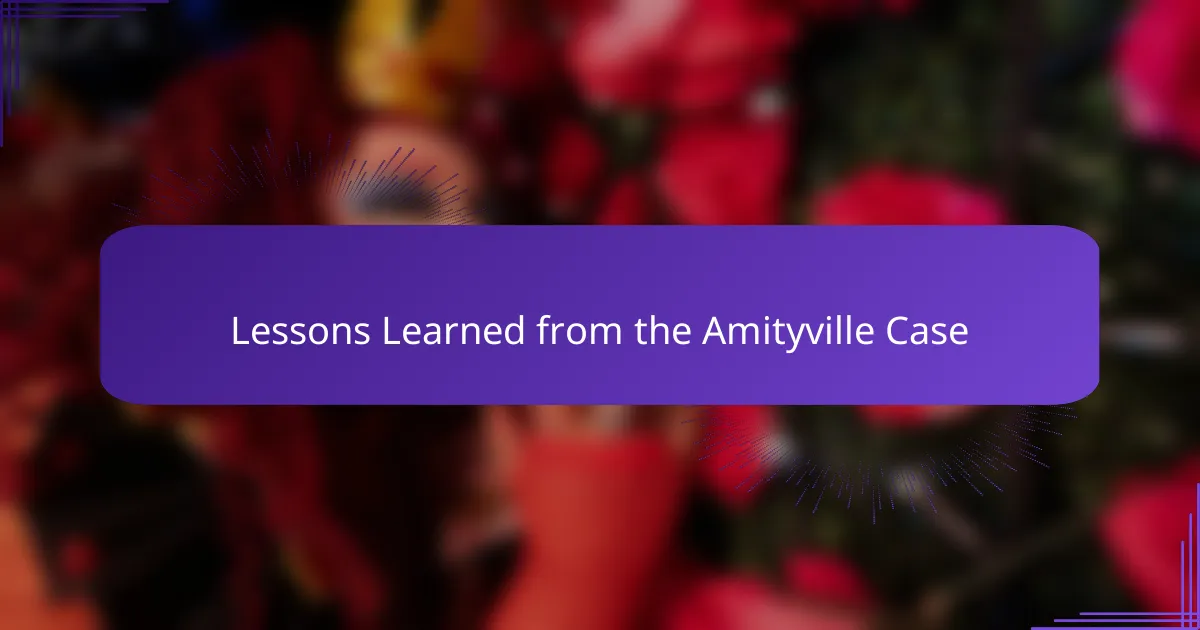
Lessons Learned from the Amityville Case
One lesson I’ve taken from the Amityville case is how easily fear can shape our perception of reality. Reflecting on the Lutz family’s experience, I realize how trauma and stress might amplify normal events into something supernatural. Have you ever noticed how your mind fills in scary details when you’re already unsettled? That’s exactly what seems to have happened here.
Another insight is the powerful role that storytelling plays in turning personal experiences into cultural myths. The way the Amityville story morphed—from a tragic event to a horror phenomenon—shows how narratives evolve and grow beyond their origins. It makes me think: are we more drawn to the story itself or to the deeper emotions it stirs within us?
Finally, the case highlights the importance of skepticism balanced with openness. I’ve learned to question claims without dismissing the genuine fear people express. After all, whether the hauntings were real or imagined, the emotional impact on those involved is undeniable. Doesn’t that remind us that sometimes, the most meaningful paranormal stories are about human experience, not just ghosts?